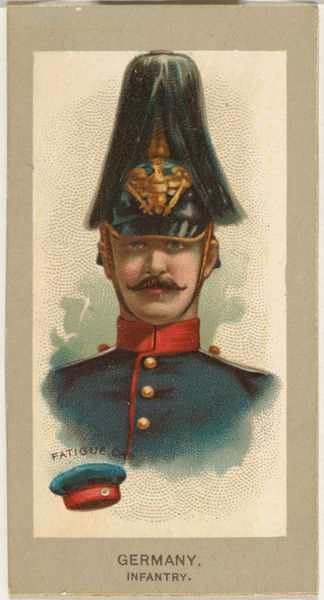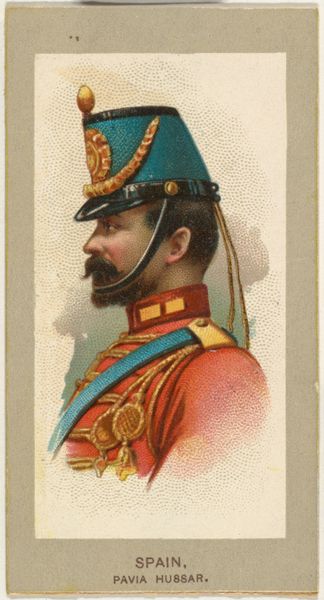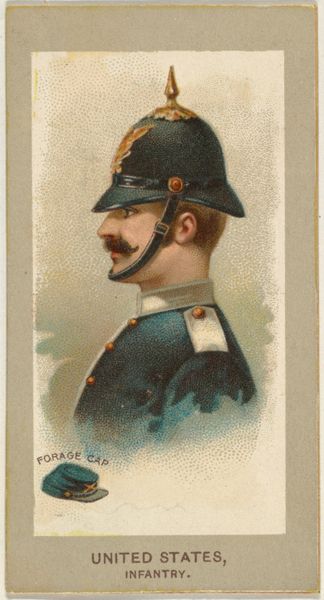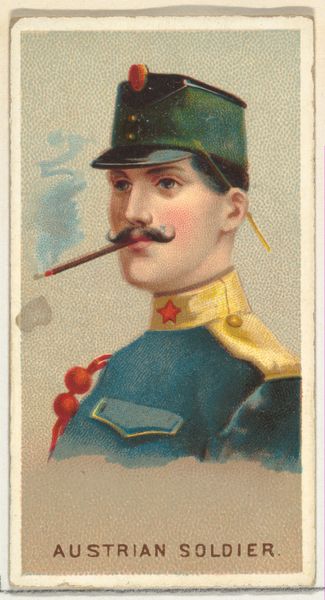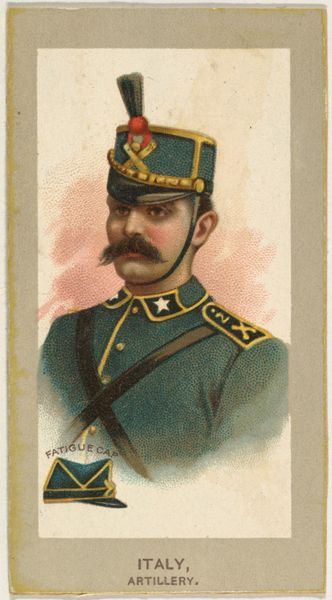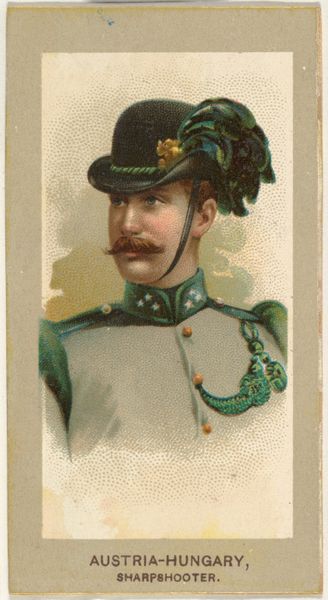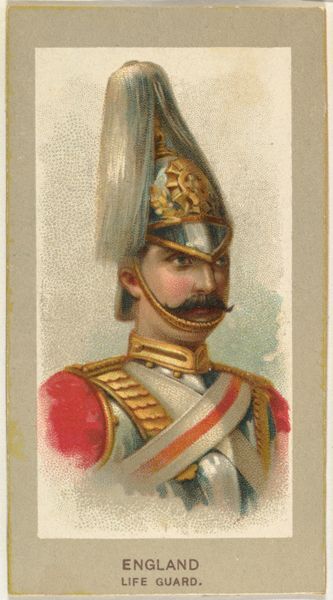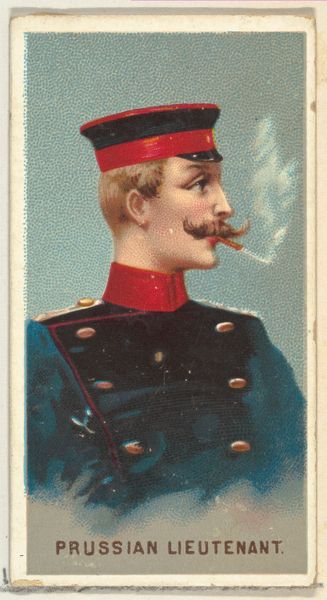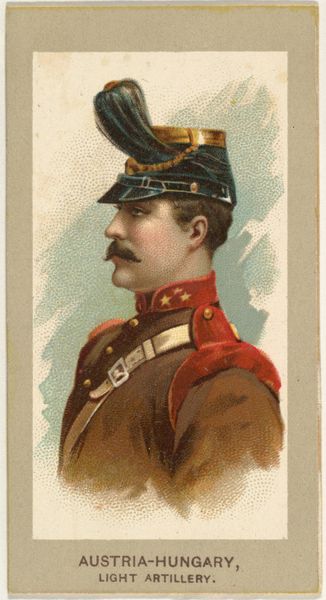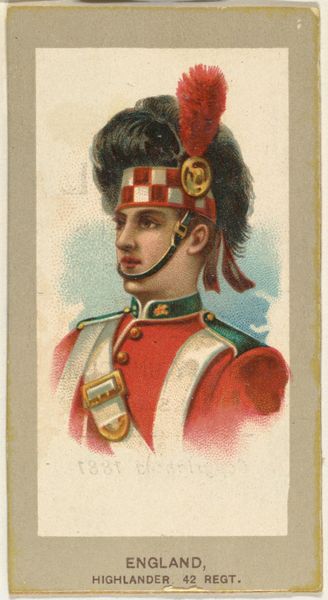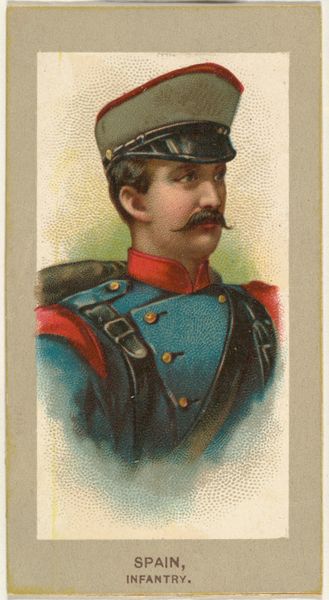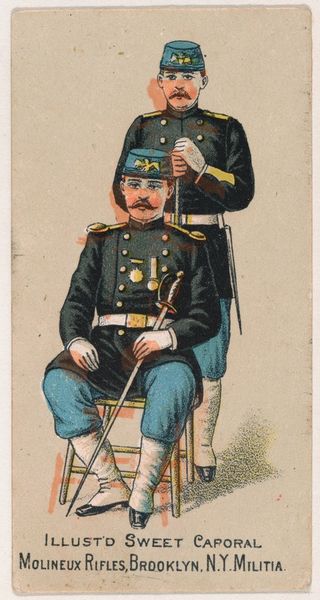
Fatigue Cap, Ulan, Germany, from the Military Uniforms series (T182) issued by Abdul Cigarettes 1881
0:00
0:00
drawing, coloured-pencil, print
#
portrait
#
drawing
#
coloured-pencil
# print
#
impressionism
#
caricature
#
caricature
#
coloured pencil
#
watercolor
Dimensions: Sheet: 3 3/16 × 1 3/4 in. (8.1 × 4.4 cm)
Copyright: Public Domain
Curator: We're looking at "Fatigue Cap, Ulan, Germany," a print from 1881, part of the "Military Uniforms" series issued by Abdul Cigarettes, currently held at the Metropolitan Museum of Art. It features a portrait of a soldier. Editor: It has a kind of faded elegance, a quiet sort of authority emanating from the subject. I find the composition itself striking— the stark lines and color palette of pale yellows, blues and grays against the grey card feel so purposeful. Curator: Notice the precise delineation of forms, the use of coloured pencil to capture the details of the uniform – the buttons, the trim, even the elaborate headgear with its decorative plume. The artist focuses our attention through this acute detailing of military paraphernalia. Editor: Right, and placing it within the context of Abdul Cigarettes highlights a fascinating intersection between militarism, consumer culture, and visual representation. Tobacco companies often used imagery associated with power and prestige to sell their products, subtly linking smoking to notions of masculinity, empire, and even rebellion. Curator: An interesting socio-political reading indeed. What strikes me is the way the portrait reduces the figure to pattern, emphasizing geometric and symmetrical organization. We're left contemplating how flat shapes interrelate and resolve in space through strategic line. Editor: I think the figure’s somewhat exaggerated features hint at the broader cultural anxieties simmering beneath the surface during that era. There's a potential for reading the artwork as a subtle form of caricature that indirectly critiqued Prussian militarism or its impacts upon the citizenry, by reducing it all to commodity fetish. Curator: Perhaps, but that argument hinges heavily on speculative interpretations. Viewing this primarily through a formal lens reveals a captivating study in form and color, where subject matter is only the facilitator, secondary to line and compositional values. Editor: True, we should resist the urge to make overly simplified conclusions. I see the effectiveness of that more elemental study, but feel this cultural framing illuminates important questions regarding representation and cultural attitudes towards the military during this historical period. Curator: I suppose that dialectic offers each of us distinctive insight, as you reveal cultural tension through historical reading, while I focus instead on its aesthetic properties as its essential merit. Editor: I think we both bring crucial dimensions of art into focus. By bringing to light both cultural tensions of history, alongside formal, geometric beauty, we appreciate its intricate layers and impact, no?
Comments
No comments
Be the first to comment and join the conversation on the ultimate creative platform.

